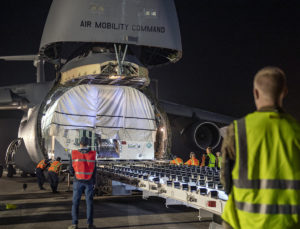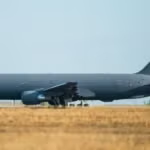
CAPE CANAVERAL, Fla. -- The Air Force delivered the sixth Advanced Extremely High Frequency (AEHF) protected satellite communications system to the 45th Space Wing Jan. 11, providing the final space vehicle for the AEHF constellation and delivering the first space asset to the Wing since the Space Force was stood up late last month. AEHF-6 was transported from Sunnyvale, California, to Cape Canaveral, Florida, via a C-5M Super Galaxy transport aircraft based at Travis Air Force Base. Among the dozen…

 By
By 











